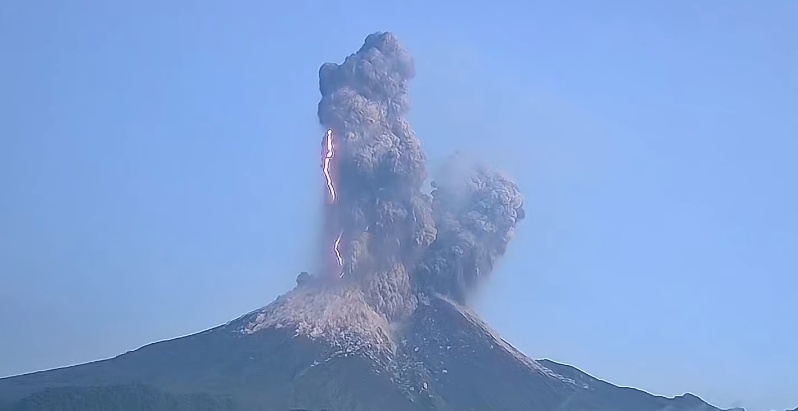Powerful eruption at Merapi volcano, ash to 10.7 km (35 000 feet) a.s.l., Indonesia

A high-level eruption took place at the Indonesian Merapi volcano, Central Java at 22:22 UTC on March 2, 2020. According to the Darwin VAAC, volcanic ash reached 10.7 km (35 000 feet) above sea level.
Pyroclastic flows descended 2 km (1.2 miles) down the slopes of the volcano, Indonesia's Geology and Volcanology Research Agency reports.
The eruption was recorded on the seismogram with a maximum amplitude of 75 mm and a duration of 450 seconds. It was heard as far as 30 km (18 miles) away.
The Aviation Color Code was raised from Orange to Red at 22:50 UTC.
Adi Soemarmo International Airport in Surakarta has been temporarily closed following the eruption.
Video courtesy Volcano YT
The Alert Level remains at 2 (on a scale of 1 – 4). Villagers and tourists are urged to stay away at least 3 km (1.8 miles) from the crater.
In an update posted 05:10 UTC, the Darwin VAAC said volcanic ash was last observed rising up to 9.1 km (30 000 feet) a.s.l., and expected to dissipate by 17:00 UTC, March 3.
PVMBG reported that the volume of Merapi’s summit lava dome decreased after the February 13 eruption which produced a 2-km-tall (1.2 miles) ash plume, ejected material within 1 km (0.62 miles), and caused ashfall within a 10-km (6.2 miles) radius.
The dome volume the day before the event was estimated at 407 000 m3 (14.4 million ft3), and afterward, on February 19, it was reduced to 291 000 m3 (10.3 million ft3).
The last major eruption of this volcano took place in 2010, claiming the lives of 353 people. The eruptive period lasted from October 26, 2010 to July 15, 2012 — VEI 4.
Geological summary
Merapi, one of Indonesia's most active volcanoes, lies in one of the world's most densely populated areas and dominates the landscape immediately north of the major city of Yogyakarta. It is the youngest and southernmost of a volcanic chain extending NNW to Ungaran volcano.
Growth of Old Merapi during the Pleistocene ended with major edifice collapse perhaps about 2 000 years ago, leaving a large arcuate scarp cutting the eroded older Batulawang volcano.
Subsequently, the growth of the steep-sided Young Merapi edifice, its upper part unvegetated due to frequent eruptive activity, began SW of the earlier collapse scarp. Pyroclastic flows and lahars accompanying growth and collapse of the steep-sided active summit lava dome have devastated cultivated lands on the western-to-southern flanks and caused many fatalities during historical time. (GVP)
Featured image: Eruption of Mount Merapi on March 2, 2020. Credit: VolcanoYT/Frekom

Commenting rules and guidelines
We value the thoughts and opinions of our readers and welcome healthy discussions on our website. In order to maintain a respectful and positive community, we ask that all commenters follow these rules.